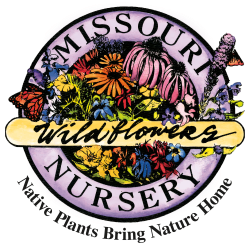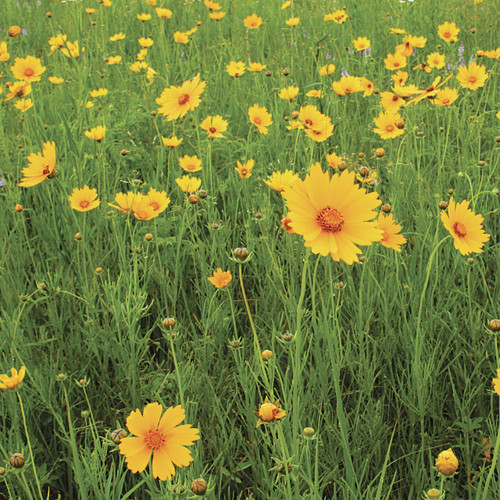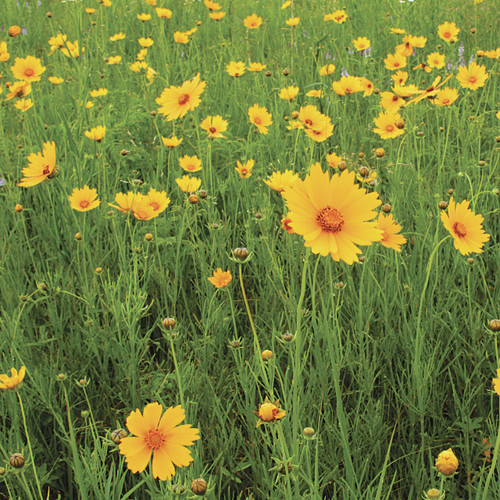Yellow bellwort grows in rich woodlands and is a good indication that little disturbance has occurred over the years. Other interesting, native wildflowers should be nearby. Look for wild ginger, dutchman's breeches, and Solomon's seal growing in the same area as yellow bellwort.
The yellow flowers are primarily pollinated by bees. Like wild ginger and bloodroot, ants disperse the seeds of yellow bellwort. Unfortunately, deer will browse this plant until it is decimated; if you have too many deer in your area, you'll have trouble keeping this plant around.
Native Americans have used the analgesic root medicinally in a variety of ways, such as a treatment for back aches. The young shoots can be eaten as you would asparagus, but this will likely kill the plant.
Uses: Bees, medicinal, shade gardens, edible
Bloomtime: April - May
Height: Up to 2 feet
Space: 8 to 12 inches
Sun: Light sun to full shade
Moisture: Average moisture with rich soil
Uvularia grandiflora (Yellow Bellwort)
POTTED PLANT
$13.50
- SKU:
- UVGRA-GA
- MAXIMUM HEIGHT:
- 2 feet
- FLOWER COLOR:
- Yellow
- BLOOM PERIOD:
- 1 Spring
- SUNLIGHT PREFERENCE:
- Medium shade to full shade
- MOISTURE:
- Average
- FORMAL LANDSCAPING:
- 4-Star








